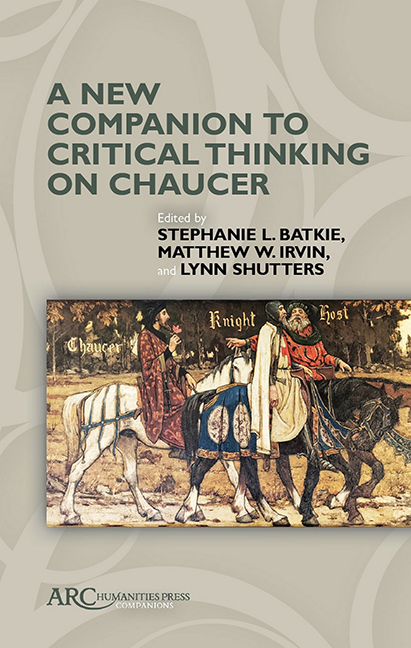Book contents
Response: Auctorite, Seculere, Flesh, Memorie
Published online by Cambridge University Press: 21 October 2021
Summary
THINKING ALONGSIDE THESE essays by Catherine Sanok, R. D. Perry, Ruth Evans, and Rick Godden, I found myself returning to three major themes—time, experience, and narrative. It seems that a discussion of time inevitably turns to a discussion of experience or narrative. Likewise, thinking about narrative invites the mind to wander into the problems of time and experience. Each term resembles the other and by some philosophical accounts, they are identical to each other. But each enjoys autonomy, too, formed by their own histories—etymologically, philosophically, and politically. While this may seem like a confusing state of affairs, it simply means that when Chaucer writes about time, he is also telling us something about experience and narrative, and so on. Perhaps this is what makes the poet philosophical. The Nun's Priest's Tale, the Wife of Bath's Prologue, and the Franklin's Tale are all good examples of these three interlinked themes, which I will discuss in turn.
Time
Time is embodied in sound in the medieval Christian West through what Gustaf Sobin calls the “sonorous aura” of bells. Bells were everywhere, sounding out every liturgical hour or special feast, all day, every day of the year. Depending on where you lived, you could hear many bells and would notice that none started at the same time, or tolled at the same tempo, pitch, or volume. Just look at a map of medieval London and see what you hear. Every religious foundation marked on the page indicates a sound as much as a building, and the whole map is a cacophony of bells. Because bells were everywhere in the Middle Ages, you see them in the strangest of places, like the hands, paws, and hooves of animals. Books of Hours and Psalters contain fantastic images of monkeys, sheep, asses, and rabbits ringing bells. There were reasons for giving bells to animals: people belled their hawks, falcons, cats, cows, sheep, and horses in order to know their location. That bells and animals go together, as it were, is corroborated by the fact that the Modern English word, “bell” comes from the Old English “bellan,” which means to make animal noises:
- Type
- Chapter
- Information
- A New Companion to Critical Thinking on Chaucer , pp. 301 - 312Publisher: Amsterdam University PressPrint publication year: 2021



